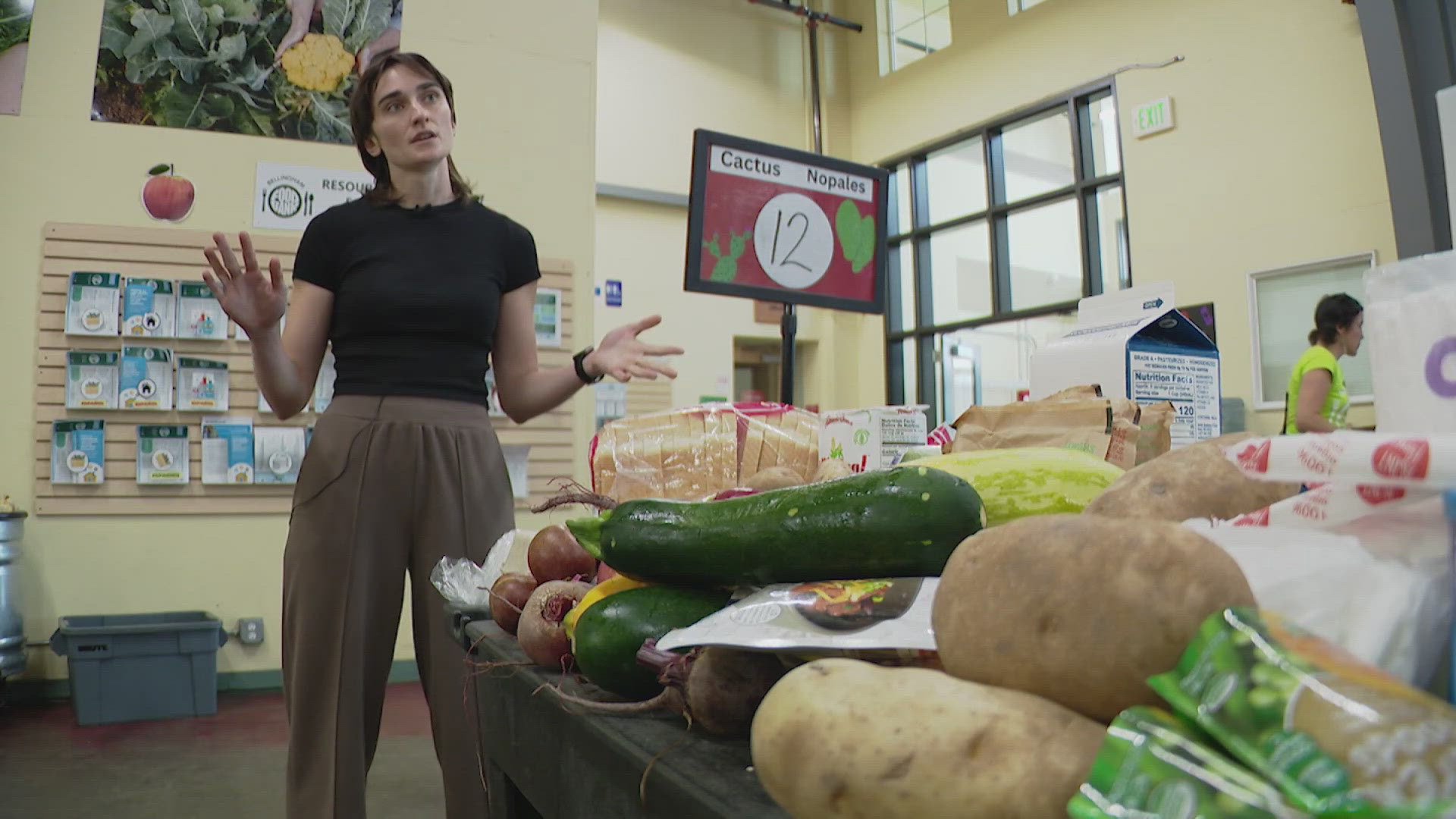BELLINGHAM, Wash. — Patricia Romero has lived and worked in Whatcom County for 30 years, but only recently has she had to visit the Bellingham Food Bank.
"It's frustrating when you go to the grocery store," she said. "$100 used to last you for the week. Now, that's a daily basis."
Romero lost her job and has a family of five to feed — leaving her to make tough decisions.
"You decide which days of the week you're allowed to serve your family a good meal with meat," she said.
The line for the Bellingham Food Bank forms more than 30 minutes before the doors open. It's an indication of just how many people are in a similar situation to Patricia.
Last year, alone, the 13 food banks in the Whatcom County Food Bank Network saw more than 800,000 visits. That's up 127% over the past two years, and shows no signs of dropping.
"We have never seen an increase like this. It's unprecedented," said the Bellingham Food Bank's Stephanie Sisson. The Network now serves 23% of Whatcom County's population.
Since the pandemic, federal COVID funds have paid for the increase in food distribution by community foods banks, but that money is now going away forever.
This, as demand continues to increase exponentially.
Whatcom County gives $100,000 per year to the Food Bank Network, but with higher costs and the rising ranks of the working poor, it's not nearly enough.
A week's worth of meals for a family costs a food bank about $10. That annual $100,000 breaks down to pocket change.
Sisson said the county's contribution only works out to 20-cents for a family's weekly ration.
"When we are serving 23% of Whatcom County, this isn't going to cut it," said Sisson.
For the first time ever, Whatcom food banks are asking the County Council for $2 million to address what they call a "public health crisis" of hunger.
Without it, they say the problem only worsens.
"It means we'd have to make tough choices about the food we'd have to give out and just tough choices in general about how we sustain ourselves," said Sisson. "It might be staff, it might be other things. We just don't know yet."
Right now, county councilmembers are working to put the budget together for the next two years, but it appears they are not optimistic about that much money being made available. They're hoping individual cities across the county may be able to contribute.
"There is only so much to go around, unfortunately," said Jed Holmes, a spokesman for Whatcom County Executive Satpal Sidhu.
Patricia Romero said she hopes the county can find a sustainable revenue stream for the food banks so she can sustain her family.
"I've been a taxpayer all my life," Romero said. "So, when I need the help I want the government to be there for me and for the community when we need it."

